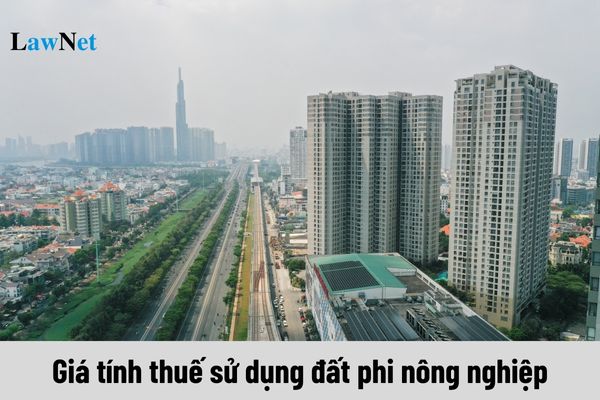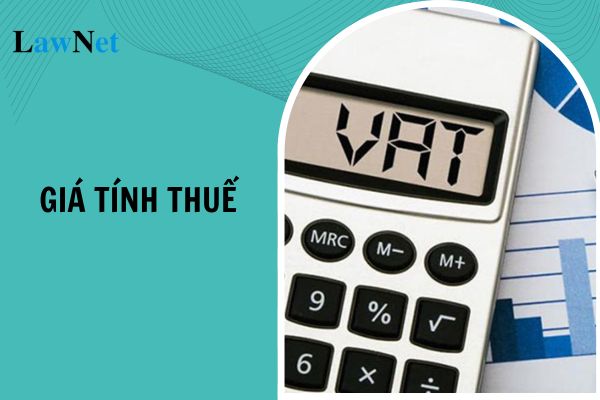What is the determination of the non-agricultural land use taxable price in Vietnam?
Which entities are non-agricultural land use taxpayers in Vietnam?
According to Article 4 of the Law on Non-Agricultural Land Use Tax 2010, the non-agricultural land use taxpayers are defined as follows:
- Taxpayers are organizations, households and individuals that have the right to use tax-liable land specified in Article 2 of the Law on Non-Agricultural Land Use Tax 2010.
- When organizations, households or indivi-duals have not yet been granted land use right certi-ficates or house and land-attached asset ownership certificates (below collectively referred to as certificates), current land users will be taxpayers.
- Taxpayers in some cases are specified as follows:
+ When land is leased by the State for the implementation of investment projects, lessees will be taxpayers;
+ When persons having land use rights lease land under contracts, taxpayers shall be identified as agreed upon in these contracts. When no agreement on taxpayers is made in contracts, persons having land use rights will be taxpayers;
+ When land has been granted a certificate but is currently under dispute, pending the dispute settlement, current land users will be taxpayers. Tax payment does not serve as a ground for the settlement of disputes over land use rights;
+ When many persons have the right to co-use a land plot, the lawful representative of these co-users will be the taxpayer;
+ When a person having land use rights contributes his/her land use rights as business capital, thereby forming a new legal entity that has the right to use tax-liable land specified in Article 2 of the Law on Non-Agricultural Land Use Tax 2010, the new legal entity will be the taxpayer.

What is the determination of the non-agricultural land use taxable price in Vietnam? (Image from the Internet)
What is the determination of the non-agricultural land use taxable price in Vietnam?
Under Article 6 of the Law on Non-Agricultural Land Use Tax 2010, as amended by Article 249 of the Land Law 2024:
Taxable price
1. Taxable price of land is the taxable land area multiplied by the price of one square meter of land.
2. The taxable land area is specified as follows:
a/ The taxable land area is the actually used land area.
When a person has the right to use many residential land plots, the taxable land area is the total area of taxable land plots.
When land is allocated or leased by the State for the construction of an industrial park, the taxable land area is exclusive of the land area for the construction of infrastructure facilities under common use;
b/ For residential land of a multi-story building with many users or a condominium with areas for both dwelling and commercial purposes, the taxable land area is the allocation coefficient multiplied by the area of the apartment of each user.
The allocation coefficient is the land area for the construction of a multistory building with many users or a condominium divided by the total area of apartments of users.
If a multi-story building with many users or a condominium has a basement, 50% of the basement area used by organizations, households and individuals shall be added to the total area of their apartments for calculating the allocation coefficient;
c/ For underground construction works, the applicable allocation coefficient is 0.5 of the constructed land area divided by the total area of works used by organizations, households and individuals. 3. The price of a square meter of land is the price of land based on its use purpose which is set by the provincial-level People’s Committee for a 5 year stabilization period from the effective date of this Law.
3. The price of a square meter of land is the land price according to the land price list corresponding to the purpose of use and is set for a 5-year stabilization period.
Thus, the taxable price of land is the taxable land area multiplied by the price of one square meter of land.
What is the formula for calculating the non-agricultural land use tax payable in Vietnam?
According to Article 8 of Circular 153/2011/TT-BTC, the non-agricultural land use tax payable is calculated as follows:
(1) For homestead land, business production land, and non-agricultural land used for business purposes:
Tax payable (VND) = Tax amount (VND) - Exempted or reduced tax amount (if any) (VND)
The tax amount is determined as follows:
Tax amount (VND) = Taxable land area (m2) x Price of 1m2 land (VND/m2) x Tax rate (%)
(2) For homestead land with multi-storey, multi-household buildings, apartment buildings (including those with basements), and underground constructions:
Tax payable = Tax amount - Exempted or reduced tax amount (if any)
The tax amount is determined as follows:
Tax amount = Area of each organization, household, individual x Allocation coefficient x Price of 1m2 corresponding land x Tax rate
For underground constructions:
Tax amount = Area used by each organization, household, individual x Allocation coefficient x Price of 1m2 corresponding land x Tax rate
(3) In cases where non-agricultural land is used for business purposes but the land area used for business cannot be determined:
Tax amount = Business land area (m2) x Price of 1m2 land (VND) x Tax rate (%)
Business land area (m2) = Total land use area x (Business revenue : Total annual revenue)










- Vietnam: How to purchase from the 2025 Trade Union Tet Market online? How much is the labor union fee for members?
- What is the online "2025 Trade Union Tet Market" program in Vietnam? What types of taxes do online sellers have to pay?
- What is taxable income? How to distinguish taxable income and income subject to tax in Vietnam?
- Shall owners of household businesses with tax debt be subject to exit suspension in Vietnam from January 1, 2025?
- What are the changes in tax refund procedures in Vietnam from 2025?
- What tax enforcement measures will be applied for taxpayers that owe tax debt in Vietnam from January 1, 2025?
- What 08 financial, banking, securities trading, and commercial services shall be exempt from VAT in Vietnam from July 1, 2025?
- Are healthcare services and veterinary services exempt from VAT in Vietnam from July 1, 2025?
- What is the total income between 02 declarations in Vietnam? What does the tax declaration dossier for individuals paying tax under periodic declarations Include?
- What are 03 professional and comprehensive 2025 Tet holiday announcement templates for enterprises in Vietnam? Where are the places of tax payment for enterprises in Vietnam?

